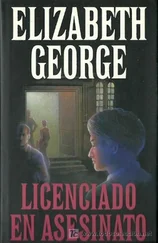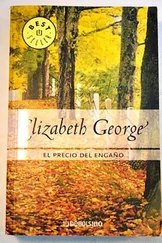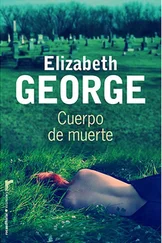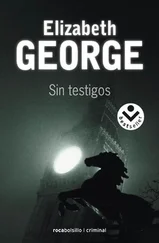“There’s something peculiar going on,” St. James had said on the phone that morning. “From what I’ve been able to gather, the local constable apparently managed to avoid calling in his divisional CID for anything more than a cursory investigation. And he seems to be involved with the woman who fed this priest— Robin Sage — the hemlock in the fi rst place.”
“Surely there was an inquest, St. James.”
“There was. The woman — she’s called Juliet Spence — admitted doing it and claimed it was an accident.”
“Well, if the case went no further and the coroner’s jury brought in a verdict of accidental poisoning, we have to assume that the autopsy and whatever other evidence there was — no matter who gathered it — verifi ed her account.”
“But when you consider the fact that she’s a herbalist—”
“People make mistakes. Consider how many deaths have risen from a putative fungi expert’s picking the wrong sort of wild mushroom in the woods and cooking it up for dinner and death.”
“This isn’t quite the same.”
“You said she mistook it for wild parsnip, didn’t you?”
“I did. And that’s where the story goes bad.”
St. James set forth the facts. While it was true, he said, that the plant was not immediately distinguishable from a number of other members of its family — the Umbelliferae —the similarities among the genera and the species were confi ned largely to the parts of the plant that one wouldn’t be drawn to eating in the first place: the leaves, the stems, the fl owers, and the fruit.
Why not the fruit, Lynley wanted to know. Didn’t this entire situation arise from the act of picking, cooking, and eating the fruit?
Not at all, St. James told him. Although the fruit was as poisonous as the rest of the plant, it consisted of dry, two-part capsules that, unlike a peach or an apple, weren’t fleshy and hence gastronomically attractive. Someone harvesting water hemlock, thinking it was wild parsnip, would not be eating the fruit at all. Rather, he’d be digging up the plant and using the root.
“And that’s the rub,” St. James said.
“The root bears the distinguishing characteristics, I take it.”
“It does.”
Lynley had to admit that, while the characteristics weren’t legion, they were enough to rouse his own sleeping disquiet. This was, in part, why he unpacked the clothing he’d put in his suitcase for a week in the mild winter of Corfu, repacked it for the insidious bone-chill of the North, and made his way up the M1 to the M6 and thence deep into Lancashire with its desolate moors, its cloud-covered fells, and its antique villages from which more than three hundred years ago had sprung his country’s ugliest fascination with witchcraft.
Roughlee, Blacko, and Pendle Hill were none of them too distant in either miles or memory from the village of Winslough. Nor was the Trough of Bowland through which twenty women were marched to their trials and their deaths at Lancaster Castle. It was historical fact that persecution raised its nasty head most often when tensions rose and a scapegoat was needed to diffuse and displace them. Lynley wondered idly if the death of the local vicar at the hands of a woman was tension enough.
He turned from his contemplation of the church and went back to the Bentley. He switched on the ignition, and the tape he’d been listening to since Clitheroe resumed. Mozart’s Requiem . Its sombre combination of strings and woodwinds, accompanying the solemn, low intonation of the choir, seemed appropriate to the circumstances. He guided the car back into the road.
If it wasn’t a mistake that killed Robin Sage, it was something else, and the facts suggested that something else was murder. As did the plant, that conclusion grew from the root.
“One distinguishes water hemlock from other members of the Umbelliferae by the root,” St. James had explained. “Wild parsnip has a single root stock. Water hemlock has a tuberous bundle of roots.”
“But isn’t it within the realm of possibility that this particular plant had only one root stock?”
“It’s possible, yes. Just as another sort of plant might have its opposite: two or three adventitious roots. But statistically speaking, it’s unlikely, Tommy.”
“Still, one can’t discount it.”
“Agreed. But even if this particular plant had been an anomaly of that sort, there are other characteristics to the underground portion of the stem that one would think a herbalist would notice. When cut open lengthwise, the stem of water hemlock displays nodes and internodes.”
“Help me out here, Simon. Science isn’t my fi eld.”
“Sorry. I suppose you’d call them chambers. They’re hollow, with a diaphragm of pith tissue running horizontally across the cavity.”
“And wild parsnip doesn’t have these chambers?”
“Nor does it exude a yellow oily liquid when its stem is cut.”
“But would she have cut the stem? Would she have opened it lengthwise?”
“The latter, no. I admit it’s doubtful. But as to the former: How could she have removed the root — even if it was the anomaly, a single one — without cutting the stem in some way?
Even breaking the root off from the stem would have produced that singular oil.”
“And you believe that’s enough of a warning to a herbalist? Isn’t it possible that she might have been distracted from noticing? What if someone was with her when she was digging it up? What if she were talking to a friend or arguing with her lover or distracted in some way? Perhaps even deliberately distracted.”
“Those are possibilities. And they bear looking into, don’t they?”
“Let me make a few phone calls.”
He had done so. The nature of the answers he’d managed to dig up had piqued his interest. Since the holiday in Corfu had turned into another one of life’s promises unkept, he threw tweeds, blue jeans, and sweaters in his suitcase and stowed that along with gumboots, hiking shoes, and anorak into the boot of his car. He’d been wanting to get out of London for weeks. While he’d have preferred his escape to be effected by a flight to Corfu with Helen Clyde, Crofters Inn and Lancashire would have to do.
He rolled past the terraced houses that signalled entry into the village proper and found the inn at the junction of the three roads, just where St. James had told him it would be. St. James himself, along with Deborah, Lynley found in the pub.
The pub itself was not yet open for its evening business. The iron wall sconces with their small tasselled shades hadn’t been lit. Near the bar, someone had set out a blackboard upon which the night’s specialities had been printed in a hand that employed oddly pointed letters, sloping lines, and a devotion to fuchsia-coloured chalk. Lasagnia was offered, as were Minuet Steak and Steamed Toffy Pudding . If the spelling was any indication of the cooking, things didn’t look promising. Lynley made a mental note to try the restaurant in lieu of the pub.
St. James and Deborah were seated beneath one of the two windows that looked out onto the street. On the table between them, the remains of an afternoon tea mixed with beer mats and a stapled sheaf of papers that St. James was in the act of folding and stuffing into his inside jacket pocket. He was saying:
“Listen to me, Deborah,” to which she was replying, “I won’t. You’re breaking our agreement.” She crossed her arms. Lynley knew that gesture. He slowed his steps.
Three logs burned in the fi replace next to their table. Deborah turned in her chair and looked into the fl ames.
St. James said, “Be reasonable.”
She said, “Be fair.”
Then one of the logs shifted and a shower of sparks rained onto the hearth. St. James worked the fire brush. Deborah moved away. She caught sight of Lynley. She said, “Tommy” with a smile and looked a mixture of saved and relieved as he stepped into the greater light that the fire provided. He set his suitcase by the stairway and went to join them.
Читать дальше












